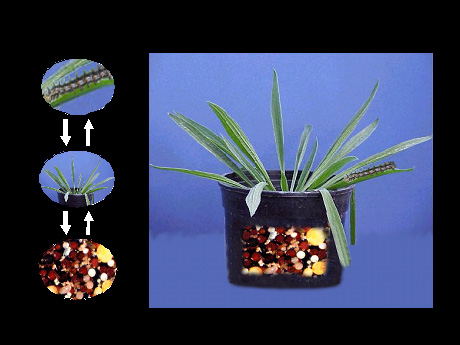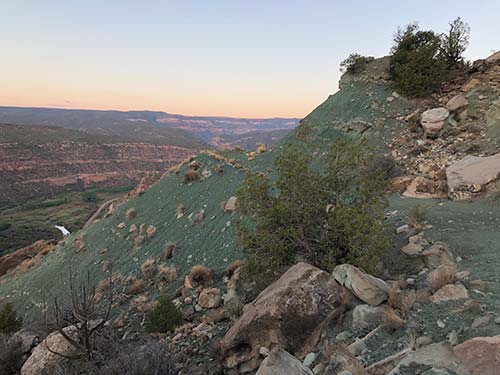
Plant-microbe-insect and multi-species interactions
Research in our group has helped pioneer the study of how arbuscular mycorrhizal (AM) fungi (a plant root mutualist) influences plant interactions with insects, and to address these questions we have worked with forbs, grasses and trees in natural and agricultural systems in North America, Europe, and Australia. Previous and current projects have focused on the influence of AM fungi on insect herbivores feeding on plantain (Plantago lanceolata), raspberry, barley, potatoes, Erigeron glaucus, and aspen. In collaboration with Ali Karley (James Hutton Institute) we are examining the influence of AM fungi in potato roots on potato aphids and vice versa. With Darren Evans (Newcastle University) and Jeff Powell (Western Sydney University) we are exploring how these interactions produce above-belowground bipartite networks. Current research within the group focuses on which factors (e.g. genotypic variability, abiotic stress) limit our ability to confidently predict the outcome of multi-species interactions between systems.

Evolution within microbiomes
Research in this area focuses on the differences in evolution and evolutionary processes between microbiomes and aboveground macro-species interactions. Part of this research is currently focused on soil microbiomes in naturally and anthropogenically contaminated soils on the Western Slope in Colorado. We ask questions such as: Does soil contamination lead to changes in microbial species and microbial species’genetic composition? Does soil contamination drive phenotypic and genotypic change in soil microbial communities? Is the process of adaptation in microbial communities similar to that of macro-species interactions, or are other processes important in evolution within microbiomes? In other systems we ask, how do abiotic and biotic stress drive changes in microbial traits?